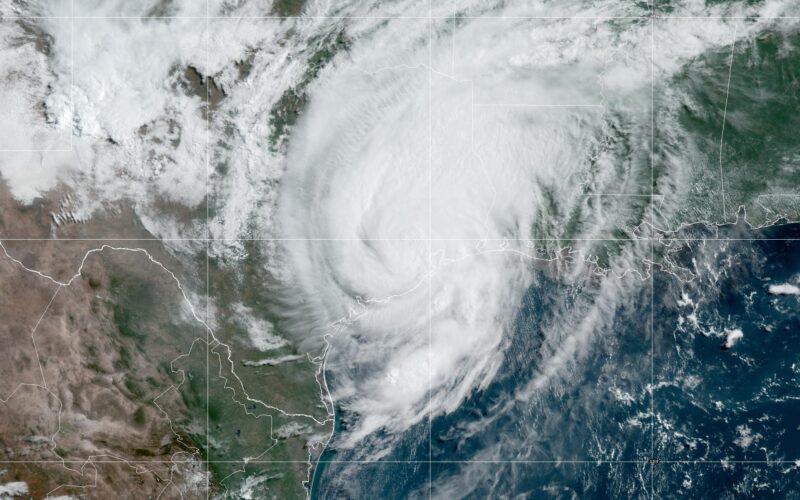MATAGORDA, Texas (AP) — Hurricane Beryl swept ashore in Texas as a Category 1 storm in the dark of the early morning hours Monday, lashing Houston with heavy rains and powerful winds, and knocking out power to 1.5 million homes and businesses as fast rising waters caused street flooding and prompted rescues.
Beryl had already cut a deadly path through parts of Mexico and the Caribbean before turning toward Texas, and hit land around 4 a.m. High waters quickly began to close streets in storm-weary Houston, the nation’s fourth-largest city, which was again under flood warnings after heavy storms in recent months washed out neighborhoods.
One man was killed in the Houston suburb of Humble when a tree fell on a house, trapping him beneath debris, according to Harris County sheriff’s office senior deputy Thomas M. Gilliland.
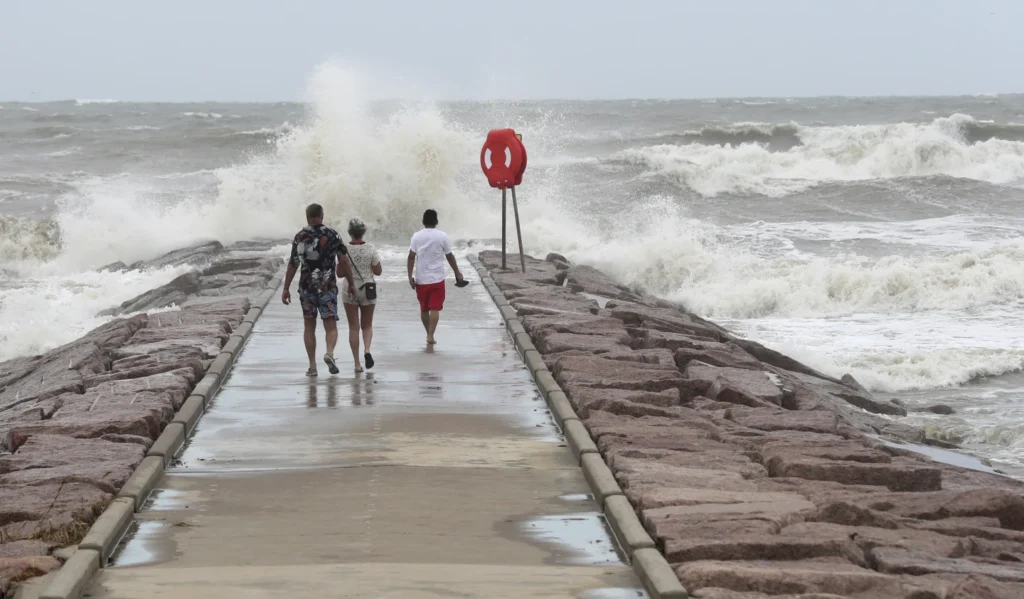
CenterPoint Energy in Houston reported 1.5 million homes and businesses were without power hours after the storm made landfall. Flood warnings were in effect across a wide stretch of the Texas coast, where a powerful storm surge pushed water ashore, and further inland as heavy rain continued to fall.
Police in the Houston suburb of Rosenberg urged residents to stay off the roads, reporting that one of its high-water rescue vehicles had been hit by a falling tree while returning from a rescue. Video footage showed heavy street flooding in the barrier island city of Galveston, and Houston was under a flash flood warning for most of the morning as heavy rain continued to soak the city.
The National Weather Service expected Beryl to weaken to a tropical storm Monday and a tropical depression Tuesday, forecasting a turn to the northeast and increase in speed Monday night and Tuesday. The storm’s center is expected to move over eastern Texas on Monday and then through the lower Mississippi Valley into the Ohio Valley on Tuesday and Wednesday.
“Beryl’s moving inland but this is not the end of the story yet,” said Jack Beven, senior hurricane specialist at the National Hurricane Center.
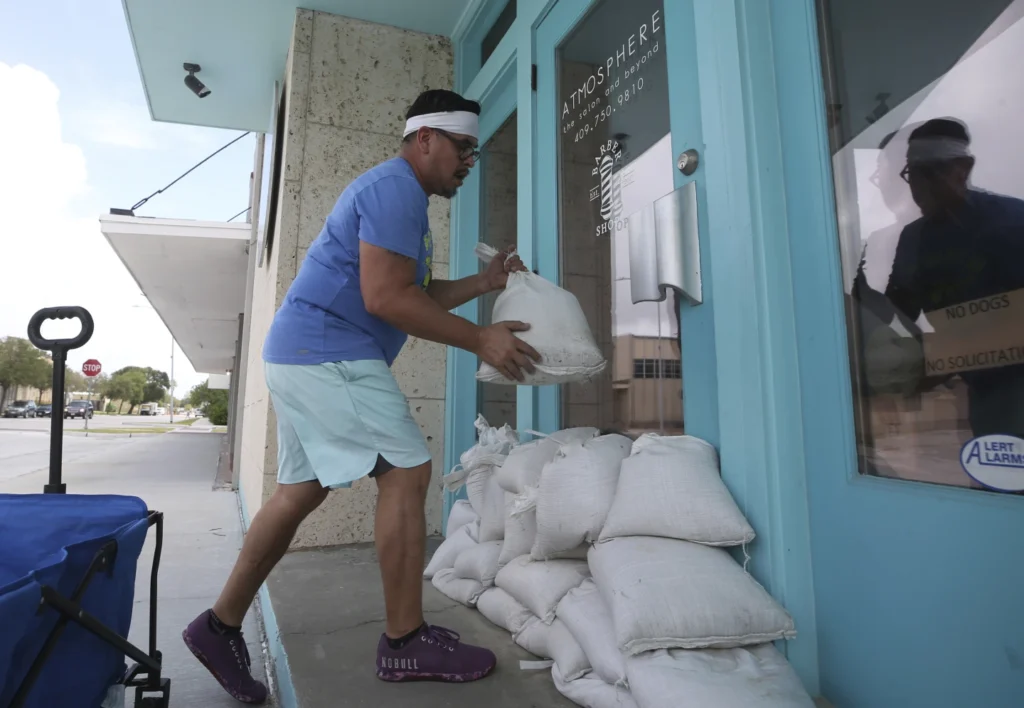
In the Texas coastal city of Freeport, Patti Richardson said she was riding out the the storm in her 123-year-old house.
“We are sitting in the middle of it. It sounds like we are in a train station, it’s that loud and has been about four hours. We’re just hoping everything holds together,” Richardson said. “You can feel the house shaking … It’s freaky.”
Beryl had weakened to a tropical storm after damaging Mexico’s Yucatan Peninsula, but became a hurricane again late Sunday. The storm’s center hit land around 4 a.m. about 85 miles (137 kilometers) southwest of Houston with top sustained winds of 80 mph (128.7 kph).
More than 1,000 flights have been canceled at Houston’s two airports, according to tracking data from FlightAware.
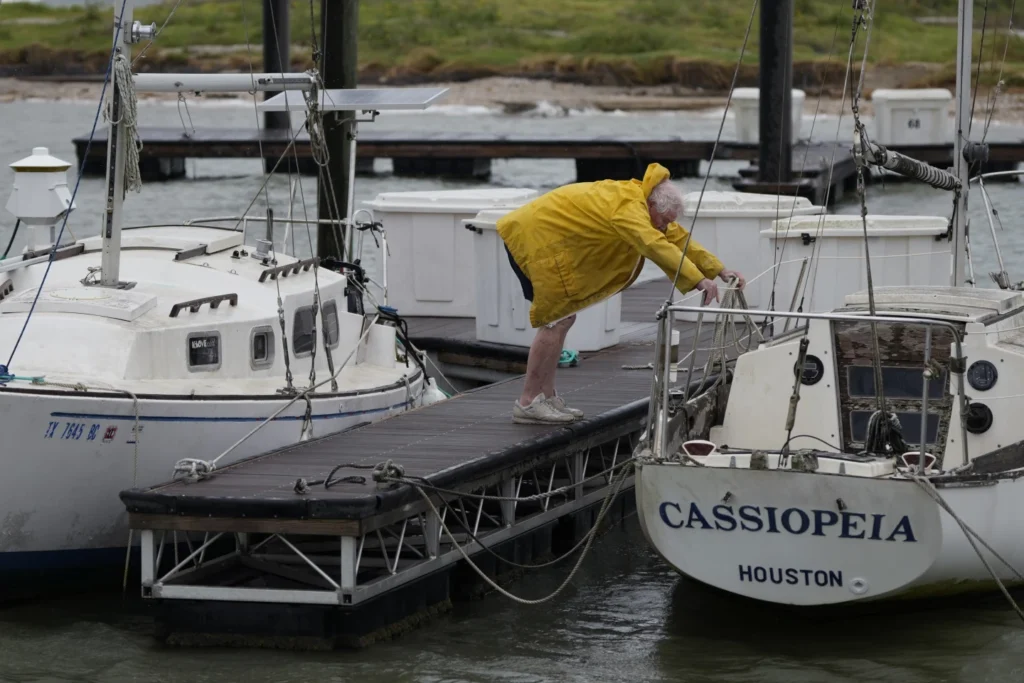
The earliest storm to develop into a Category 5 hurricane in the Atlantic, Beryl caused at least 11 deaths as it passed through the Caribbean on its way to Texas. The storm ripped off doors, windows and roofs with devastating winds and storm surge fueled by the Atlantic’s record warmth.
Three times during its one week of life, Beryl has gained 35 mph (56 kph) in wind speed in 24 hours or less, the official weather service definition of rapid intensification.
Beryl’s explosive growth into an unprecedented early whopper of a storm indicates the hot water of the Atlantic and Caribbean and what the Atlantic hurricane belt can expect for the rest of the storm season, experts said.
Texas officials warned people along the entire coastline to prepare for possible flooding, heavy rain and wind. The hurricane warning extended from Baffin Bay, south of Corpus Christi, to Sargent, south of Houston.
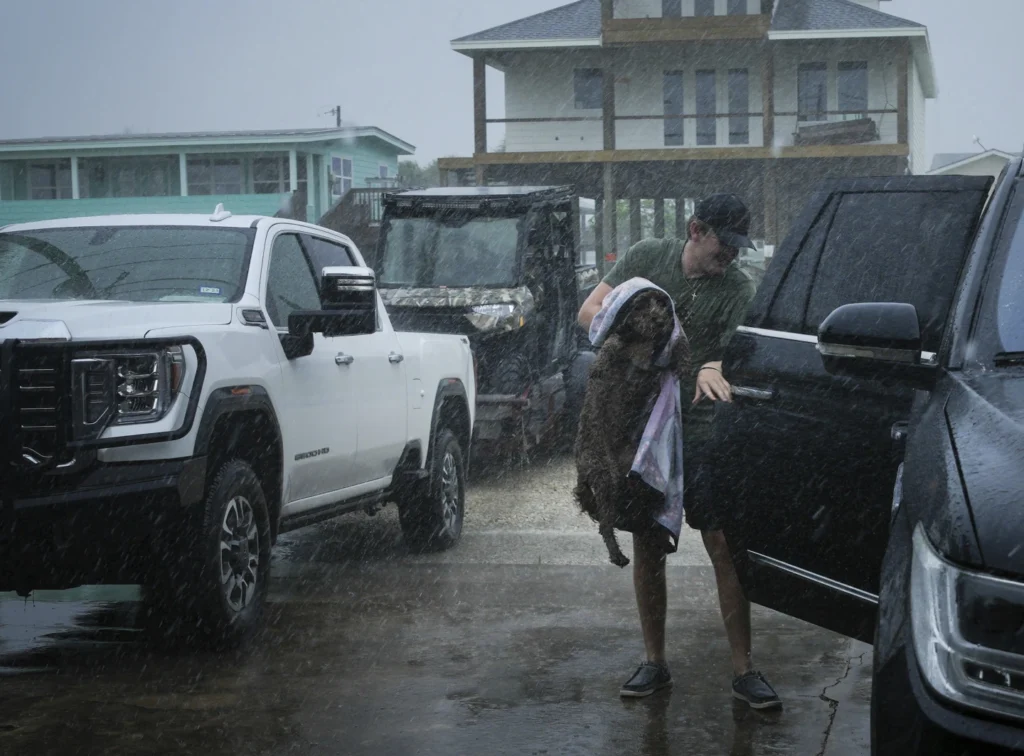
Potential storm surges between 4 and 7 feet (1.22 and 2.13 meters) above ground level were forecast around Matagorda. The warnings extended to the same coastal areas where Hurricane Harvey came ashore in 2017 as a Category 4 hurricane, far more powerful than Beryl.
In Louisiana, heavy bands of rain are expected all day Monday and “the risk is going to be for that heavy rainfall and potential for flash flooding,” National Weather Service meteorologist Donald Jones said in a Facebook Live briefing this morning.
Meteorologists in Louisiana are watching for lingering rainbands, which could drop copious amounts of rain wherever they materialize, as well as “quick, spin-up tornadoes,” said Donald Jones, a National Weather Service meteorologist in Lake Charles, Louisiana.
“It’s just a matter of exactly where that’s going to be,” Jones said. “That’s very difficult to predict more than maybe an hour or so in advance.”
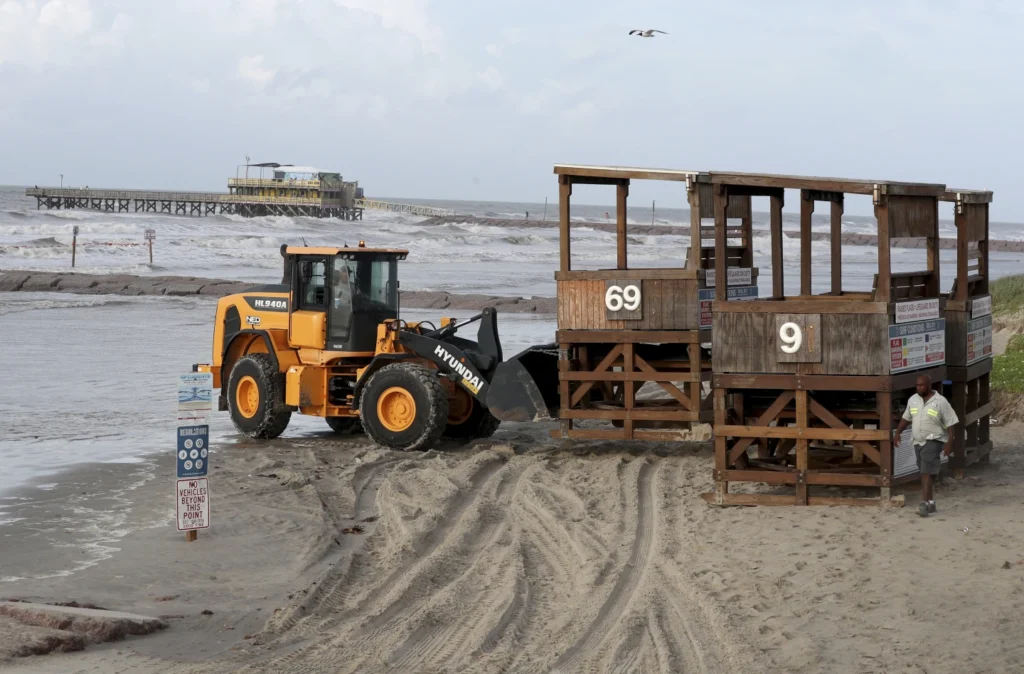
Tornadoes were also possible in eastern Texas, Louisiana, and Arkansas, the hurricane center said.
People on the Texas coast boarded up windows and left beach towns under an evacuation order.
The hurricane center warned residents to be prepared for possible flash flooding in parts of middle, upper and eastern Texas as well as Arkansas as the storm gradually turns to the north and then northeast later Monday.
People on the Texas coast boarded up windows and left beach towns under an evacuation order. Many residents and business owners took the typical storm precautions but also expressed uncertainty about the storm’s intensity.
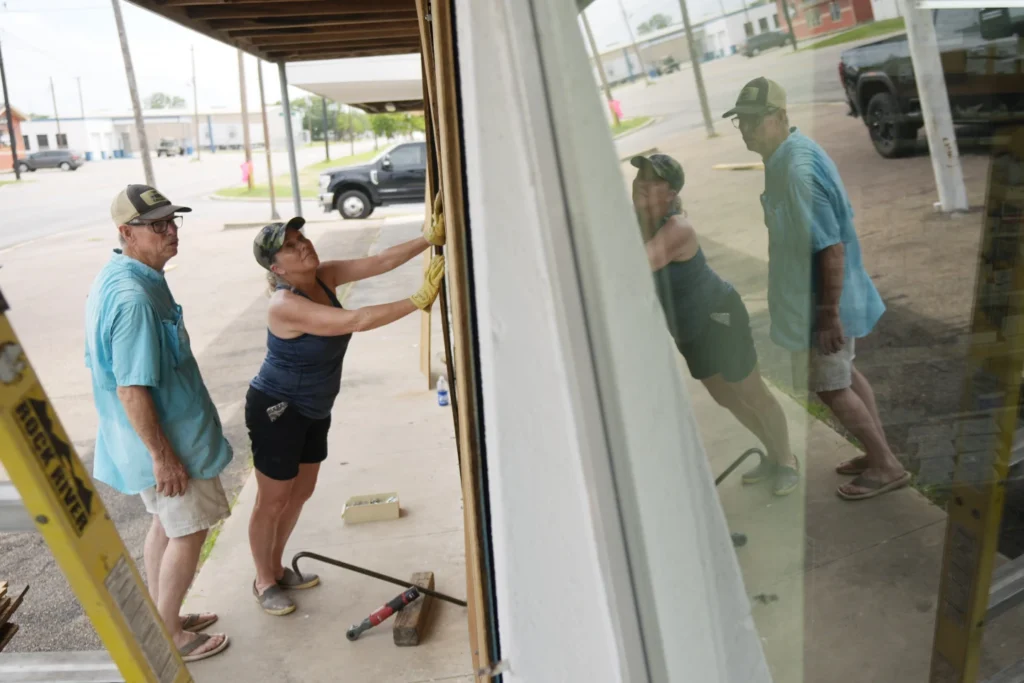
In Port Lavaca, Jimmy May fastened plywood over the windows of his electrical supply company and said he wasn’t concerned about the possible storm surge. He recalled his business had escaped flooding in a previous hurricane that brought a 20-foot (6-meter) storm surge.
“In town, you know, if you’re in the low-lying areas, obviously, you need to get out of there,” he said.
The White House said Sunday that the Federal Emergency Management Agency had sent emergency responders, search-and-rescue teams, bottled water and other resources along the coast.
Several coastal counties called for voluntary evacuations in low-lying areas that are prone to flooding. Local officials also banned beach camping and urged tourists traveling on the Fourth of July holiday weekend to move recreational vehicles from coastal parks.
Beryl battered Mexico as a Category 2 hurricane last week, toppling trees but causing no injuries or deaths before weakening to a tropical storm as it moved across the Yucatan Peninsula.
Before hitting Mexico, Beryl wrought destruction in Jamaica, Barbados and St. Vincent and the Grenadines. Three people were reported dead in Grenada, three in St. Vincent and the Grenadines, three in Venezuela and two in Jamaica.
By MARK VANCLEAVE and JUAN A. LOZANO/Associated Press
Valerie Gonzalez reported from McAllen, Texas. Associated Press reporters Corey Williams in Detroit, Valerie Gonzales in McAllen, Texas, Margery A. Beck in Omaha, Nebraska, Hannah Schoenbaum in Salt Lake City and Julie Walker in New York contributed.

